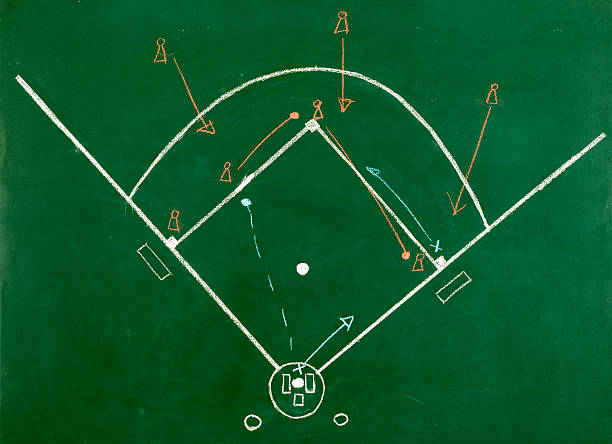Baseball, known as America’s pastime, is a game of strategy as much as it is athleticism. This article delves into the nuanced world of baseball strategies, exploring the tactical intricacies that unfold on the diamond.
Pitching Tactics
At the heart of baseball strategy lies the art of pitching. Pitchers aim to outsmart batters by employing an array of pitches, each designed to deceive and disrupt timing. From fastballs to breaking balls like curveballs and sliders, the pitcher’s ability to mix and locate pitches strategically plays a crucial role in keeping hitters off balance.
Defensive Shifts and Positioning
In recent years, defensive shifts have become a prominent strategy to counter power hitters. Teams strategically position fielders based on data analytics, anticipating a batter’s tendencies to hit the ball to specific areas. The shift, a testament to the marriage of technology and strategy, aims to exploit patterns in a hitter’s spray chart, limiting potential hits.
Small Ball and Fundamentals
While power hitting garners attention, small ball tactics emphasize fundamental skills. Bunting, stealing bases, and executing hit-and-run plays are integral to manufacturing runs. Teams adept at small ball can capitalize on situational opportunities, turning strategic plays into valuable runs, especially in tight, low-scoring games.
Managing the Bullpen
In the later innings, managing the bullpen becomes a chess game for managers. Each relief pitcher has a specific role, from setup men to closers, and their deployment is a critical decision. A well-managed bullpen can shut down opposing offenses, while missteps can lead to late-game collapses. Strategic bullpen usage is key to preserving leads and securing victories.
Offensive Strategies of Baseball
Offensively, teams employ various strategies to exploit weaknesses in the opposing pitcher. Patient at-bats to drive up pitch counts, hitting to the opposite field, and executing hit-and-runs are tactics to disrupt the pitcher’s rhythm. The art of reading signs from base coaches and catchers also comes into play, allowing players to anticipate pitches and make informed decisions on the basepaths.

Count Management and Plate Discipline
Understanding pitch counts and managing the count during at-bats is pivotal. Hitters aim to work favorable counts, forcing pitchers into predictable situations. Plate discipline, the ability to lay off pitches outside the strike zone, is a hallmark of successful hitters. Thus, this strategic approach can lead to walks, advancing runners and putting pressure on pitchers.
Defensive Strategies
Additionally, on the defensive side, infield and outfield positioning is crucial. Teams adjust based on the hitter’s tendencies, situational factors, and the pitcher’s offerings. Therefore, the double play, a defensive strategy involving a quick sequence of outs, is a testament to infield coordination and strategic positioning to thwart potential rallies.
Run Prevention and Run Creation
Furthermore, teams strategically balance run prevention and run creation. Outfielders with strong arms deter runners from taking extra bases, while catchers with accurate throws can control the opponent’s running game. On the offensive side, strategic base running and aggressive base stealing are employed to create scoring opportunities and pressure the opposing defense.
Pitcher-Batter Matchups
Moreover, every pitcher-batter matchup is a strategic battle. Managers often make substitutions based on the handedness of the pitcher and batter, seeking favorable matchups. This chess game involves pinch-hitters, relief pitchers, and defensive shifts to gain a competitive edge in specific situations, showcasing the importance of in-game decision-making.
In-Game Adaptation
In conclusion, baseball’s dynamic nature requires teams to adapt in real-time. Managers must assess the evolving game situation, make quick decisions on substitutions, and adjust strategies based on the score, inning, and player performance. In-game adaptation is a hallmark of successful teams, showcasing the ability to respond to unforeseen challenges and capitalize on emerging opportunities.











